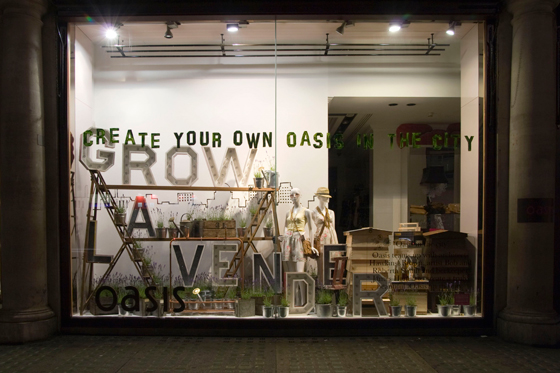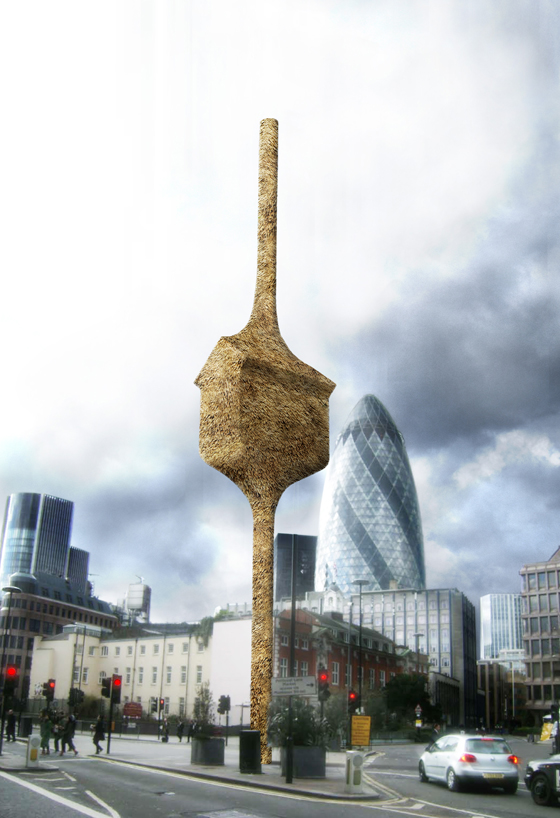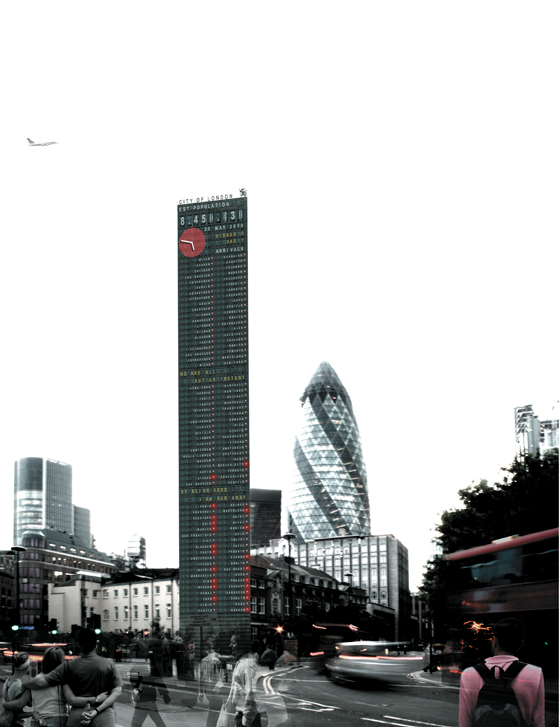Route Master: the 2010 London Festival of Architecture
Scritto da Tim Abrahams
London, Regno Unito
17.07.10
With the 2012 Olympics coming round that last bend and into view, this year's geographic-route-fixated London Festival of Architecture decided on 'The Welcoming City' as its theme. But just how welcome was that as an idea.
London-based practice Carmody Groarke's 'Studio Dining East' pop-up restaurant for Bistrotheque; the temporary structure sat on top of the Westfield Stratford City development, adjacent to the 2010 Olympics site; photo © Paul-Riddle.com
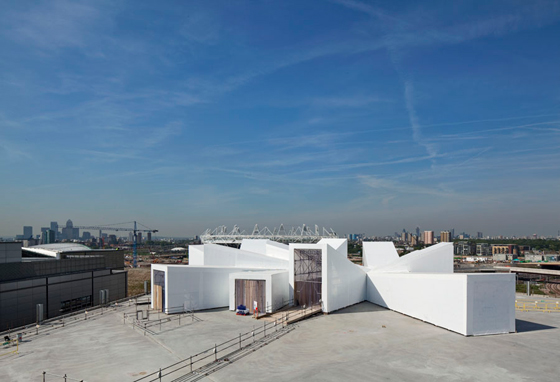
London-based practice Carmody Groarke's 'Studio Dining East' pop-up restaurant for Bistrotheque; the temporary structure sat on top of the Westfield Stratford City development, adjacent to the 2010 Olympics site; photo © Paul-Riddle.com
×The official address for the building known colloquially as the 'Gherkin' is 30 St Mary Axe. On the same street is a church called St Andrew Undershaft, which goes generally unused by the bankers who work nearby. Once a year, though, the church comes alive with a memorial service for a man called John Stow, who compiled a survey of London in 1598, which was, in effect, an ageing historian divining the medieval street plan of the city that had been built upon during its rapid expansion during the reign of the first Queen Elizabeth. Today, Stow is, in turn, remembered. During the annual service, a quill is placed in the hand of his statue, where it stays for a year. The old quill is given to a child who has written the finest essay on London. In the very shadow of modern London, as part of a quaint, old ceremony, the city’s children are encouraged to divine their own path through the metropolis.
At the Duke of York Steps, just off The Mall, Matthew Lloyd Architects presented their intervention for the London Festival of Architecture: a water-powered lift
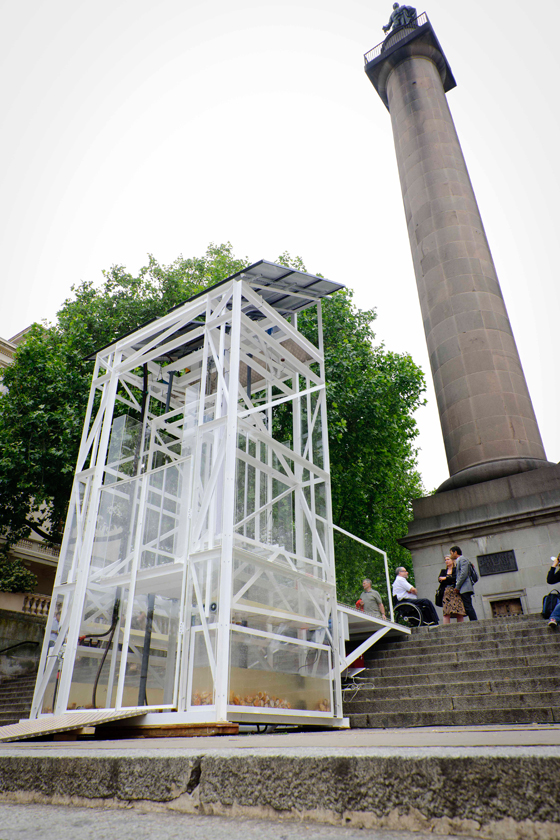
At the Duke of York Steps, just off The Mall, Matthew Lloyd Architects presented their intervention for the London Festival of Architecture: a water-powered lift
×Since it was established by Peter Murray in 2004, the London Festival of Architecture has presented new architecture through a historical frame, revealing old routes through medieval London, through carnival and play. Peter Murray has cited Peter Ackroyd’s book 'London: The Biography' as inspiration for the event, which advocates at every turn the spirit of place, drawing out it through the peeling away of layers of historical fact, literary allusion and intuition. Murray has also said of the author, however, that 'although he has a natural fascination with the old, Ackroyd accepts the idea of change and renewal as a part of the life force of the place.’ In keeping with this, Murray organised a herd of cows to be driven down St John Street, highlighting the fact that this street, with its fashionable restaurants and trendy architects' practices, was once an important livestock route to Smithfield Market.
London Festival of Architecture windows as mere window dressing in London's Regent Street
This tactic was informative, but it was also critical. One got the impression at this year’s London Festival of Architecture, however, that, in these straitened times, London’s civic authorities are using this carnivalesque strategy to replace real development. The 'Nash Ramblas' is a grand scheme by Sir Terry Farrell, architect of, among other projects, the MI6 Building in London, Seoul's Incheon International Airport, and the Beijing South Railway Station. The idea is to build on the success of the Jubilee Walkway on the South Bank and create a grand walk that links Primrose Hill to St James’s Park. It turns the spine of the scheme proposed by the architect Nash to the Prince Regent in 1811 – an avenue from the Regent’s home at Carlton House in the Mall to Regent Street – into a pedestrian boulevard.
'The London Gate' proposal by DONIS of the Netherlands for a new landmark at London's Aldgate
The project was proposed several years ago, but is still on the drawing board of London’s planning authorities, which are placed in the hands of the individual London boroughs. The new office of London Mayor has some powers for strategy, but as it has proved reluctant to use them or extend them. The problem is that there is no real public hunger for the project. Attempts to rekindle it during the London Festival of Architecture were at best misguided. The sight of Paul Finch, Director of CABE and the World Architecture Festival, dressed up as The Duke of York and Will Alsop as Nash was too much for most London architects to bare. Focusing on this route didn’t feel so much like the rediscovering of an ancient way through the city, but rather the touting of Farrell’s pet architectural project.
'Vertical Forest' proposal for Aldgate, London, by Japanese studio Sou Fujimoto
At the festival, the Nash Ramblas (Farrell’s main masterplanning idea for any city is to introduce a copy of the Barcelona street) was also celebrated by the minor intervention of a cunning, water-powered lift, designed by Matthew Lloyd Architects and located on the Duke of York Steps at the eastern end of the Mall. The project as a whole, though, still feels strangely irrelevant. The opening of the Jubilee route along the river was combined with the opening of Tate Modern and the Millennium Bridge, as well as the reinvigoration of the South Bank Centre and the building of City Hall. The walkway connects London’s new and refurbished cultural sites. Farrell’s scheme seems, basically, to mean the pedestrianisation of a couple of streets, and the only cultural signficance of Primrose Hill, where Farrell’s route rises, is that Jude Law lives there. The Regent Street Windows project for the LFA, in which some of London’s best architecture practices worked with major retailers, was, quite literally, window dressing.
'Ceci n'est pas une maison' by NORMAL, a proposal for London's Aldgate
It seems as if routes are becoming the new means of getting architecture and regeneration on the cheap, and, in difficult times, the LFA is playing along. We learned of a new one at this year’s festival: High Street 2012. Londoners had hitherto known the road that leaves Aldgate in the east of the City of London and finishes in Stratford as either the A11 or as the Mile End Road or Bow Road, depending on which bit you're talking about. Since the arrival of the Olympics, however, this jumbled stretch of low-end retail, a university, hospitals and housing is being rebranded. Typical of the approach taken to it by the Olympic Delivery Authority is Studio Egret West's 'Shoal', a piece of public sculpture placed in front of an old shoppping centre, which simply hides an unpleasant piece of architecture behind a large screen.
'Aldgate to the World' proposal by Juan Alfonso Galan Arquitecto
Indeed, it was significant that the events for the High Street 2012 part of the LFA were focused in Aldgate or in Stratford, that is, at either end of the road. In Aldgate, an exhibition of competition ideas for a gateway to the City demonstrated the huge reduction in scale of architectural ambition that this recession version of the London Festival of Architecture marks. Several of the shortlisted projects show the Gherkin in the background, looming over the design. Anyone who has approached London on the A11 – sorry, on High Street 2012 – will know that the Gherkin already acts as the gateway to the City.
Carmody Groarke's temporary 'Studio Dining East' space for restaurant Bistrotheque afforded views of the 2012 Olympics site in development; photo © Paul-Riddle.com
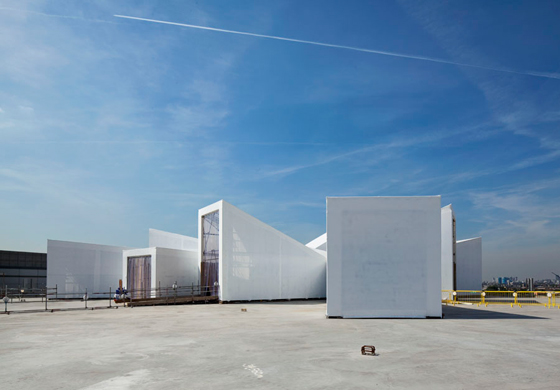
Carmody Groarke's temporary 'Studio Dining East' space for restaurant Bistrotheque afforded views of the 2012 Olympics site in development; photo © Paul-Riddle.com
×One shouldn’t be completely critical, though. The cultural component of the Olympic Games has led to a re-routing of arts funding in the UK for a year, so arts bodies and major cultural enterprises across the country are thinking about how they can put on what will be known as 'welcoming events'. Given that the theme of the LFA this year was 'The Welcoming City', the festival organisers were clearly thinking along the same lines. The problem is that the LFA events in Stratford proved how polarised attitudes to the Olympics are. Austrian practice Feld72’s 'Hyperlympics' installation in Stratford showed no real engagement with the idea of welcoming, blasting noise at anyone who attempted to engage with it and rejecting the idea of the Olympics as spectacle. Elsewhere, a tour by Laura Oldfield Ford (she of 'Savage Messiah' zine) presented a critical, polemical view of the process by which the Olympics project has been developed, but it was certainly no welcome.
'Studio Dining East', situated on top of the Westfield Stratford City development, was in place for just three weeks; photo © Paul-Riddle.com
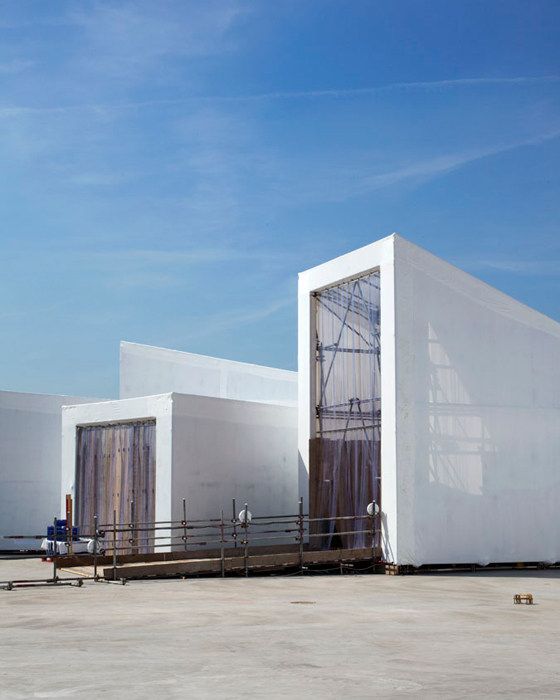
'Studio Dining East', situated on top of the Westfield Stratford City development, was in place for just three weeks; photo © Paul-Riddle.com
×Conversely, Carmody Groarke’s Studio East Dining by Bistrotheque is most welcoming, if not the most accessible. Situated on top of the Westfield Shopping Centre that is being built adjacent to the Olympics site, the temporary restaurant is constructed ingeniously from materials scavenged from the building site. It creates a theatrical panopticon for the Olympics development and is also a well PR-ed society event. With dinners at £70 a pop, it was beyond the reach of most pockets, although that may, inadvertently, be a commentary on the Games themselves.
While accessibility was one of the London Festival of Architecture's watchwords, the cost of dinner at 'Studio Dining East' was beyond the reach of most pockets; photo © Paul-Riddle.com
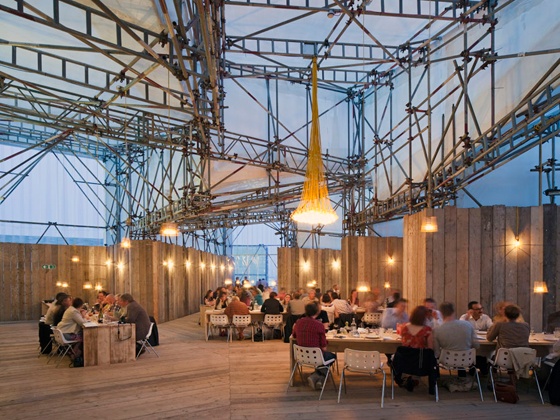
While accessibility was one of the London Festival of Architecture's watchwords, the cost of dinner at 'Studio Dining East' was beyond the reach of most pockets; photo © Paul-Riddle.com
×Perhaps the slightly flat sensation one was left with after this year's LFA is as much a product of an historical moment as a result of the programme itself. The impressive patchwork of sponsorship the organisers always stitch together was, naturally, greatly compromised this year, due to the economic climate. More significantly, though, there may have been a strategic re-think and prioritising in time for 2012, with a conscious move from critical events to celebratory ones.


